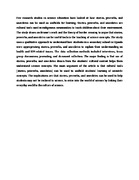| dc.description.abstract | Few research studies in science education have looked at how stories, proverbs, and anecdotes can be used as scaffolds for learning. Stories, proverbs, and anecdotes are cultural tools used in indigenous communities to teach children about their environment. The study draws on Bruner's work and the theory of border crossing to argue that stories, proverbs, and anecdotes can be useful tools in the teaching of science concepts. The study uses a qualitative approach to understand how students in a secondary school in Uganda were appropriating stories, proverbs, and anecdotes to explain their understanding on health and HIV-related issues. The data collection methods included interviews, focus group discussions, journaling, and document collection. The major finding is that use of stories, proverbs, and anecdotes drawn from the students' cultural context helps them understand science concepts. The main argument of the article is that cultural tools (stories, proverbs, anecdotes) can be used to scaffold students' learning of scientific concepts. The implications are that stories, proverbs, and anecdotes can be used to help students may not be inclined to science, to enter into the world of science by linking their everyday world to the culture of science. | en_US |


